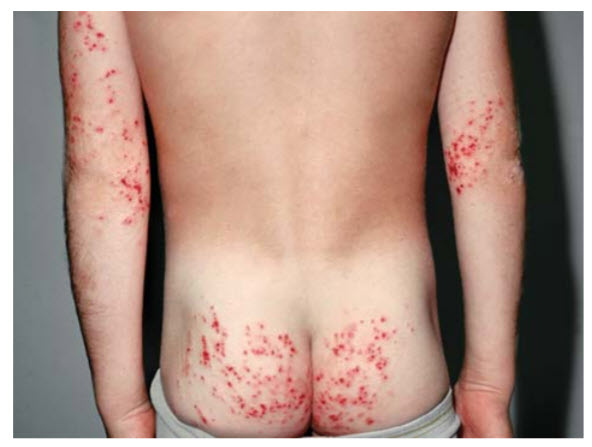Question 4#
A 42-year-old man presents with a chronic and severely pruritic rash on his bilateral elbows and buttocks. The patient first noticed the rash 9 months ago and reports that the itching has worsened over the last 3 months. Review of systems is unremarkable except for some loose stools over the past 3 years. Physical examination reveals grouped papulovesicular lesions on the extensor regions of his bilateral elbows and buttocks (Figure below).

Which of the following diseases is associated with this chronic blistering skin condition?
A. Crohn diseaseB. Celiac disease
C. Ulcerative colitis
D. Herpes simplex virus
Correct Answer is B
Comment:
Celiac disease. The patient in this question likely has dermatitis herpetiformis, a chronic blistering skin condition characterized by intensely pruritic papulovesicular skin lesions located symmetrically on extensor surfaces. Although the mechanism is not fully known, dermatitis herpetiformis is associated with gluten intolerance and celiac disease. Diagnosis is confirmed by ordering anti-endomysial antibodies of the IgA type and a skin biopsy (immunofluorescent studies demonstrate IgA in the dermal papillae). Treatment is with a gluten-free diet and dapsone (mechanism of efficacy is not entirely understood). (A, C) Crohn disease and ulcerative colitis both can present with extraintestinal manifestations, but not dermatitis herpetiformis. Rather, ulcerative colitis and Crohn disease are associated with pyoderma gangrenosum (deep necrotic ulcers typically located in the lower extremities). (D) Although the name dermatitis herpetiformis seems to suggest a relationship with the herpes virus, the name is simply based on the skin lesions looking similar to herpetic lesions (grouped vesicles).